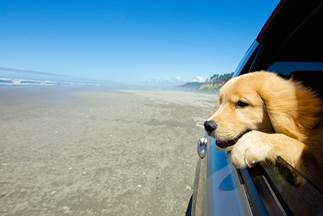How heavy is your pet? Are they obese or just a little bit too cuddly? Here are some tips for losing weight, from Ella Woods…

SHED THOSE EXTRA KILOS! HELP YOUR PET LOSE WEIGHT
According to recent studies, most pets are overweight. This condition puts them at the risk of developing various diseases such as arthritis, kidney and heart diseases. Overweight pets also tend to have a shorter lifespan than those in the healthy weight range. Therefore, we ought to take initiatives to keep them fit. There are various principles of maintaining ideal body weight for pets. If we adhere to these, we can reduce the number of obese pets that we have in our homes…
Determine the pet’s ideal weight
First of all, you need to determine your pet’s ideal weight. This helps to determine if your pet is overweight or not. A veterinarian can help figure out the pet’s ideal weight and give some recommendations on what should be done. The pet should also be screened for any underlying conditions that might be causing the obesity. These conditions include diabetes, hypothyroidism and low thyroid function among others.

Design a meal plan
You also need to come up with a meal plan. This is a guide for how you are going to feed your pet. It includes food designed for weight loss, treats, adjusted portions as well as the frequency of feeding the pet. Consult a veterinarian who can advise you on what the ideal meal plan for your pet is.
Actualize the meal plan
Once you have developed appropriate weight loss plan, put into to practice. Depending on your vet’s recommendations, reduce your pet’s food intake or change to weight loss diet. Weight loss diet is a prescription diet that has lower calories and high fiber. It is intended to make the pet eat more and still lose weight as it contains fewer calories.
Calculate the calories that you ought to give your pet daily. The amount of food you give him/her should be equal to the prescribed amount of calories in your diet plan. Therefore, you must measure accurately what to feed the pet. These amounts differ from one pet to another as it is dictated by various factors. Some of these factors include weight, level of activity and the age of the pet. It is important to consult your veterinarian for guidance on how to feed your pet appropriately. The label recommendations on the pet’s products can be misleading; hence it is not advisable to depend on them. Consider getting timed automatic feeders. They help to get the right amount of food at right times.

For successful weight loss, you must be selective about the food that you feed your pet. Pick those foods with the following qualities; above-average protein, below average fat and below average calories. Cut down the carbohydrates in the pet’s meal and try high protein low carbohydrate ones. Add supplements that encourage weight loss and promote good health. Consult your veterinarian to recommend appropriate supplements for your pet.
Overweight dogs more likely to have behaviour problem
you are going to give your pet snacks and treats, choose those that have low calorie and sugar- free. Give him/her nutritionally balanced treats such as dry food kibble or dehydrated food cubes. There are some treats that are designed to help clean the pet’s teeth and promote mobility. Try feeding your pets with some vegetable snacks such as cucumbers, sliced apples, broccoli, celery, green beans or baby carrots. Remember you must include these treats in the total amount of calories intake.
Exercise
Exercise is very important for a pet’s weight loss. Adopt various activities that your pet prefers. You could take him/her for a walk, play with toys or run up and down the stairs. This will keep the pet healthy and active. These exercises facilitate the weight loss. The more frequent the exercises, the more the weight loss. Start with short walks or exercises and gradually increase the distance and speed of the exercises. These activities also help the pet to burn more calories and increase muscle development. Add toys and games to the pet’s exercise to prevent boredom.
Monitor the pet’s weight loss progress
You also need to monitor your pet’s weight loss progress at least once a week. Keep records of how you are feeding your pet daily. If you find that the weight loss plan is not effective then you need to adjust it.
From the author
Hello! My name is Ella Woods, and I am 29 years old. I am a stay at home mother and wife who writes in her free time so that I will not go crazy!My blog is Housinghere.com! I write about the experiences I go through personally.
More articles about pet health
Overweight dogs more likely to have behaviour problems






